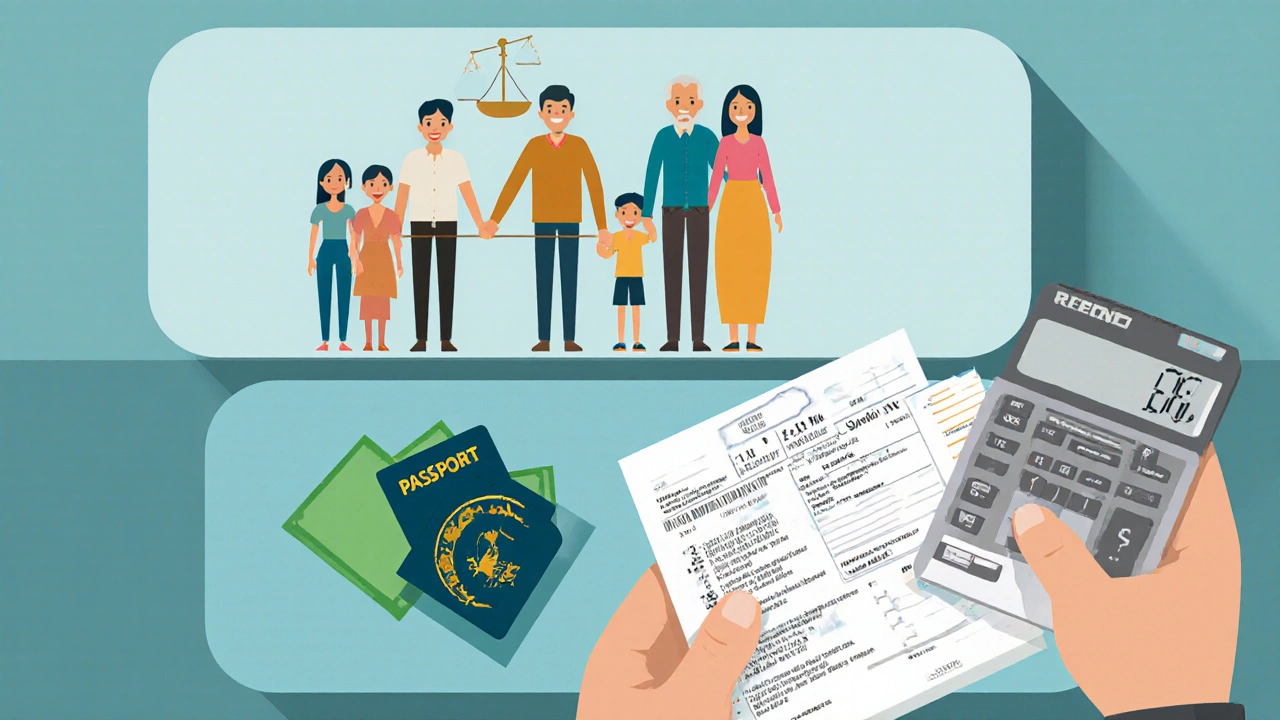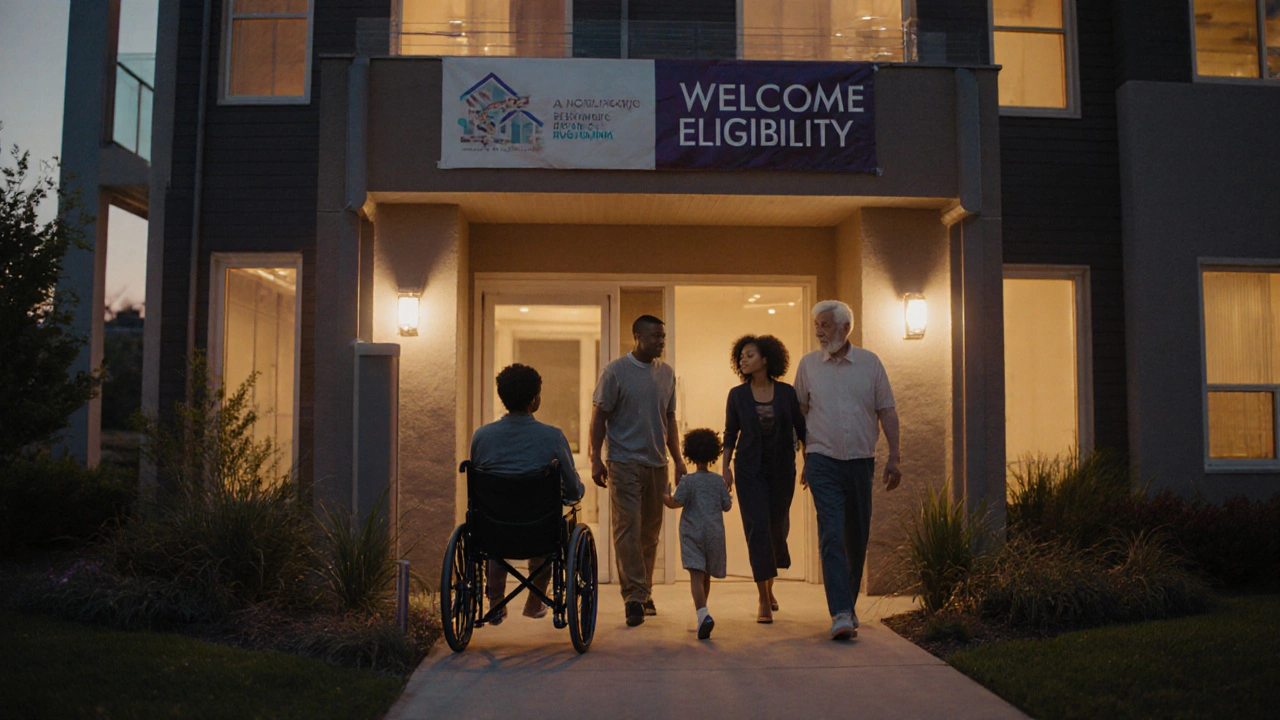US Affordable Housing Eligibility Calculator
Check Your Eligibility
Enter your information to see if you qualify for affordable housing programs based on your income and household size.
Imagine you’re hunting for a rental that won’t eat up half your paycheck. The good news is the United States has a network of affordable housing housing that is subsidized or priced below market rates for low‑to‑moderate‑income families. But the system is a maze of programs, income thresholds, and paperwork. This guide cuts through the clutter, tells you exactly who qualifies, and shows you how to prove it.
Quick Takeaways
- Eligibility hinges on three core factors: household income, size, and citizenship status.
- Federal programs (Section 8, Public Housing, LIHTC, USDA Rural Development) each have distinct income caps usually set at 30‑80% of the Area Median Income.
- Veterans, seniors, and people with disabilities often qualify for extra priority.
- State and city agencies may add their own limits, so always check local guidelines.
- Start with an online income‑limit calculator, then gather tax returns, pay stubs, and proof of citizenship before you apply.
Understanding the Basics of Affordable Housing
Affordability is measured against the Area Median Income (Area Median Income the midpoint of all household incomes in a specific geographic area). The U.S. Department of Housing and Urban Development (HUD federal agency that administers most affordable‑housing programs) publishes yearly income‑limit tables for every metropolitan area, county, and even some rural regions.
When a program says “50% of AMI,” it means a household must earn no more than half of that median figure. For a city where the AMI is $80,000, the 50% limit would be $40,000 annual gross income.

Core Eligibility Criteria
All major programs share three baseline requirements:
- Income: Must fall at or below the program’s published limit, which is expressed as a percentage of AMI. Some programs use a sliding scale, allowing up to 80% of AMI for “moderate‑income” units.
- Household Size: Income limits are adjusted for the number of people in the household. A single‑person household has a lower threshold than a family of five.
- Citizenship or Eligible Immigration Status: At least one adult must be a U.S. citizen, a permanent resident, or hold a qualifying immigration status (e.g., refugee, asylee). Certain veterans’ programs accept non‑citizens who serve in the armed forces.
Beyond these, many programs give extra points or higher priority to seniors (62+), people with disabilities, and veterans. When a program uses a “preference” system, those groups move ahead in the waiting list but still must meet the income rule.
Major Federal Programs and Who They Serve
The four biggest federal streams are:
| Program | Typical Income Limit | Target Group | Key Feature |
|---|---|---|---|
| Section 8 Housing Choice Voucher portable voucher that subsidizes rent in the private market | 30% of AMI (sometimes up to 50% for special vouchers) | Low‑income families, seniors, disabled persons | Tenant selects unit; voucher covers portion of rent |
| Public Housing government‑owned apartments managed by local housing authorities | 30% of AMI | Very low‑income households, often with children | Rent is a fixed % of income (usually 30%) |
| Low‑Income Housing Tax Credit (LIHTC) private‑sector tax incentive that funds affordable rentals | 50-60% of AMI (varies by state) | Moderate‑income families, sometimes seniors | Units are owned privately; rent caps tied to income |
| USDA Rural Development Housing grants and loans for affordable homes in rural areas | 80% of AMI (often higher to attract rural residents) | Rural families, seniors, veterans | Offers both rental assistance and home‑ownership loans |
Each program uses HUD’s income‑limit tables, but the exact percentage varies. For example, the Section 8 voucher program usually caps at 30% of AMI, while LIHTC projects may stretch up to 60%.
State and Local Add‑Ons
Many states run their own affordable‑housing initiatives that sit on top of federal rules. California’s “Homekey” program, for instance, reserves units for homeless veterans and seniors at 40% of AMI. New York’s “Housing Preservation and Development” grants provide extra vouchers for families with children, using a 50% AMI ceiling.
Because these programs are administered locally, the paperwork, waiting‑list procedures, and exact income thresholds can differ from one county to the next. Always start with the local housing authority’s website or call their eligibility line.

How to Check Your Eligibility - A Step‑by‑Step Guide
- Identify your Area Median Income. Use HUD’s online AMI calculator: enter your ZIP code and household size.
- Determine the program you’re interested in (Section 8, Public Housing, LIHTC, USDA, etc.). Note the income percentage each program uses.
- Calculate your “maximum qualifying income” by multiplying the AMI by the program’s percentage.
- Gather proof of income (most recent pay stub, W‑2, tax return) and household size (birth certificates, school records).
- Collect documents proving citizenship or eligible immigration status (U.S. passport, green card, naturalization certificate, or approved refugee paperwork).
- Visit your local public housing authority (PHA) website. Many have an online portal where you can submit a preliminary application and upload documents.
- If you qualify, you’ll be placed on a waiting list. Some PHAs allow you to check your position online; others will email you updates.
- When a unit becomes available, you’ll receive an interview invitation. Bring all original documents and be ready to answer questions about your employment and any special needs.
Tip: If you’re borderline-say your income is 82% of AMI for a 80% limit-consider applying for a “special voucher” that may raise the cap for seniors or disabled members.
Common Mistakes and Pro Tips
- Skipping the AMI check. Many applicants assume they’re eligible without confirming the local median income first.
- Leaving out a household member. Income limits adjust for each person; omitting a child can push you over the cap.
- Using outdated tax documents. PHAs usually require the most recent year’s tax return; a three‑year‑old return can delay or disqualify you.
- Missing the citizenship proof. Even a green‑card holder must submit a clear copy; a blurry scan leads to a request for resubmission.
- Waiting list “expiration.” Some jurisdictions reset your position if you don’t respond to a vacancy notice within 30 days.
Pro tip: Keep a dedicated folder-digital or paper-named “Affordable Housing Docs.” Update it every six months with new pay stubs and tax forms so you’re ready when a voucher opens up.
Frequently Asked Questions
What does “30% of AMI” actually mean?
It means the household’s total gross income must be no more than 30% of the median income for the area the housing is located in. HUD publishes the exact dollar numbers each year.
Can non‑citizens apply for Section 8?
Yes, if they have a qualifying immigration status such as a green card, refugee status, or are a member of the U.S. military. They must provide proof of that status with the application.
Do I have to live in the unit I’m assigned?
For Section 8 vouchers, you choose the unit, but the lease must meet HUD’s housing quality standards. Public housing tenants must reside in the specific public‑housing complex that assigned them a unit.
How long are waiting lists usually?
It varies wildly-some urban PHAs have lists that are 10years long, while rural USDA programs may open slots within a few months. Check the local authority’s published wait‑time estimates.
Is there a way to speed up the process?
Submitting a complete, error‑free application the first time helps. Some jurisdictions also run “rapid‑response” windows for veterans, seniors, or families with children; keep an eye on local announcements.
If you’re ready to start, grab your most recent tax return, plug your ZIP code into HUD’s AMI calculator, and contact your local public housing authority. With the right paperwork and a clear understanding of income limits, you’ll be on the path to affordable housing sooner than you think.

